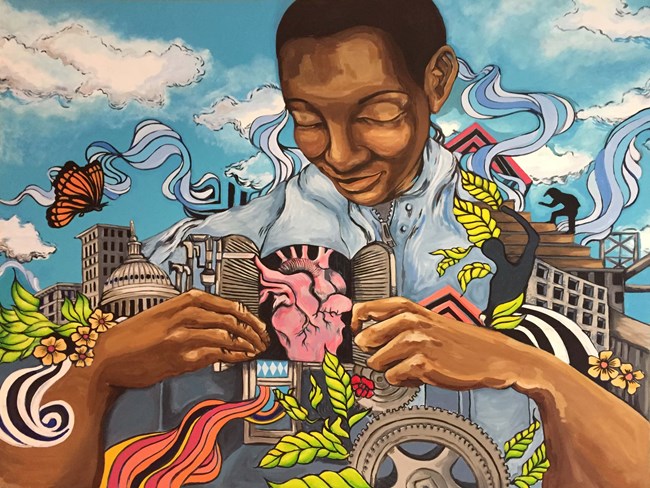Part of a series of articles titled Best Practices for History Lessons and History Discovery Events.
Article
10 Guiding Questions for Dynamic History Lessons

Historical thinking encourages us to continually ask new questions about the past, find and evaluate evidence, value multiple perspectives, and place events in broader contexts. It also recognizes that our understanding of the past changes over time.
2. Does the event reflect the best scholarship about the topic?
Historical thinking is rooted in good scholarship defined by extensive research in primary sources and works of relevant scholars. If in doubt about the best scholarship, reach out to trusted peers.
3. Does the event include multiple perspectives?
How people experience the world varies across race, ethnicity, gender, sexuality, and class. Recognizing multiple perspectives enriches our understanding of history and connects our audiences to this diversity.
4. Does the event highlight how people in the past have shaped events?
The past is a messy place. Individuals and communities struggled to address problems, take action, and make sense of experiences. Revealing how people made choices within the context of their time encourages audiences to consider the role they themselves play in shaping our future.
5. Does the event forthrightly address conflict and controversy both in, and about, the past?
The past is replete with painful episodes of oppression and conflict. Uncertainty may even abound when scholars and the public discuss “what happened” and “what it means.” Open and honest conversations about difficult subjects lie at the heart of civil society.
6. Does the event provide a forum for new audiences to speak?
It is important to honor the perspectives of those whose history is being explored. Good history emerges when interpreters, practitioners, and community partners narrate and interpret the past together.
7. Does the event envision “doing history” as a way to develop skills for civic participation?
Historical thinking cultivates skills that can help people confront and negotiate difference along lines of race, ethnicity, gender, sexuality, and class. They learn to listen respectfully, develop empathy, and think critically about events in the past, including legacies of injustice.
8. Does the event recognize the important roles of memory and memorialization?
Memory and memorialization shape how we tell stories over time. Dynamic interpreters and practitioners bring past narratives into conversation with contemporary topics. They seek to understand how and why people have remembered that place or event as significant.
9. Does the event share your resources with new audiences using digital humanities tools and methods?
Online exhibits, tours, and curriculum can help new audiences explore NPS resources and the experience of place in accessible, sustainable ways. Digital methods and tools allow virtual visitors from local, national, and even global communities to offer their own interpretations of historic sites.
10. Does the event recognize your or your organization's role in shaping your community’s history?
We influence the communities and resources we steward. Good history practice reflects upon how we have shaped our own physical resources and neighboring communities. It also recognizes that human activity and changing ideas about nature have shaped natural areas.
Last updated: September 6, 2017
